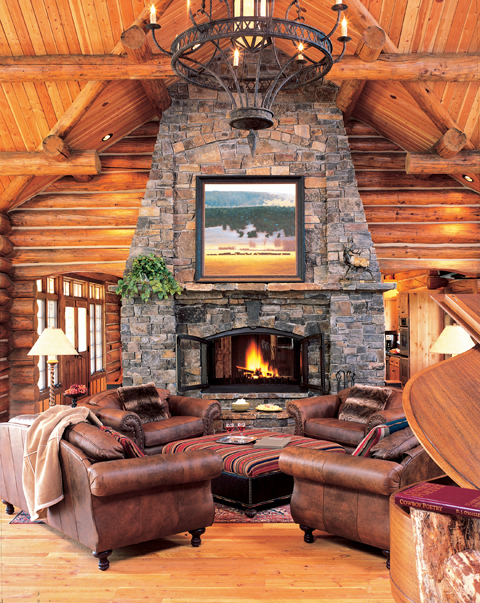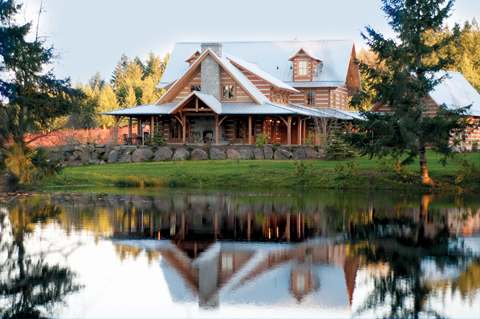“Log or timber homes with wider gaps between the logs are built with chinking in mind,” explains John Schroeder of northern Minnesota-based Schroeder Log Home Supply. “Other homes are built with tighter fits between the logs and may not require chinking. Although it is a matter of the size of the gap and the look of the mortar, it is still a good idea to caulk between logs.”
Chinking refers to covering gaps between logs or timbers, and its name is derived from an Old English word meaning “fissure or crack.” Early chinking was a basic mixture of mud, and then came concrete. Over time synthetic products became available that provide better performance and sealing qualities while also offering good looks.
The benefits of chinking are readily apparent. Energy efficiency, structural soundness, elimination of the intrusion of moisture, keeping out damaging insects or rodents, and the aesthetics that reflect pride of ownership are good reasons to chink.

Rocky Mountain Log Homes
However, the owner’s preference directs the course of action. “Log styles and profiles will dictate whether chinking is used as a necessity or for appearance only,” relates Kathy Webb, president of Twin Creeks Log Home Supply, Inc., in Johnson City, Tennessee. “Many log profiles will have a false chink reveal in which chinking is used as a contrast. But certain logs, such as traditional Appalachian style or large, solid round logs will need chinking to complete the log wall and will provide for the overall house seal.”
Once the decision is made to apply chinking to a log or timber home, the appropriate product must be chosen while climate, weather pattern, cost, and other considerations are evaluated. Performance is key, and a quality product will provide lasting dividends.
Tony Huddleston of Perma-Chink Systems notes, “When you purchase a new chink-style log home, the log home manufacturer will normally provide the required backing material and possibly the chinking compound as well. It is usually best to use what is furnished by the manufacturer, as it is part of the design process when the home is purchased. Once the stain has cured, you can start the application of the backing material provided, and again follow the directions provided by the manufacturer on all products. There are some basic rules that come into play to ensure the success of your chinking job.
“Always use an approved backer for two-point adhesion at the top and bottom of the joint,” Huddleston continues. “Then if for some reason there is movement the chinking can pull away from the back and stretch as it is designed to do but will maintain a weather tight seal to prevent leakage.”
Once chinking is applied, the homeowner should keep a watchful eye on the finished project. Vigilance makes for minor repairs and upkeep, preserving the good looks of the log or timber home, either inside or outside, and warding off the elements—particularly moisture or damaging insects that could generate costly repairs.
“Chinking is a very durable and pliable compound,” comments Webb, “which will not require any upkeep under normal circumstances. But if the chinking does tear due to log settling, then the old chinking would need to be removed and new chinking should be applied. When staining the house, the chinking needs to be taped off to prevent any stain from discoloring the compound.”
Today’s chinking compounds are designed to be applied on the entire structure during the same project timeframe. Huddleston echoes Webb’s advice and adds, “If properly done following a few simple rules, then chinking needs little or no maintenance over the years. The reasons for maintenance usually relate to improper installation or physical damage of some type. As far as the aging process, about the only issue will be that the color will change due to pollution or dirt, but this too is usually avoided by simple cleaning to remove deposits left by nature.”
From the aesthetic qualities of the interior and exterior of a log or timber home to the need for protection against the elements, chinking can be a critical component of the overall construction or improvement of a property. Take stock in the need and the look and make an informed decision that will provide satisfaction well into the future.

